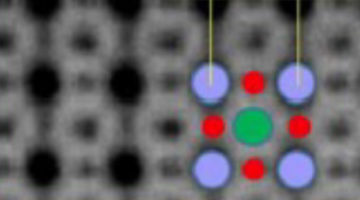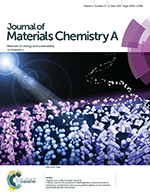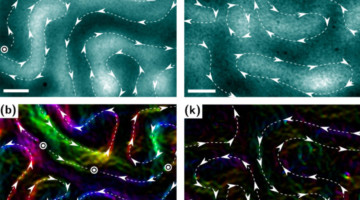Pupa Gilbert, professor of physics at the University of Wisconsin at Madison, is the 2018 recipient of the David A. Shirley Award for Outstanding Scientific Achievement at the ALS, “for her development of polarization-dependent imaging contrast mapping to image the orientation of carbonate nanocrystals in marine biominerals.” Read more »
ALS Work Using XAS
In x-ray absorption spectroscopy (XAS), the incident x-ray energy is tuned over a range that will excite core-level electrons. Sharp increases in absorption occur at specific energies, characteristic of the absorbing element. The resulting spectra probe the elemental composition as well as the chemical and electronic structure of the material.
New Manganese Materials Bolster Cathode Capacity
The most expensive component of a battery, the cathode, requires rare transition metals like cobalt. Previous attempts to replace cobalt with inexpensive and non-toxic manganese delivered insufficient performance. Now, researchers have optimized the composition of high-energy-density, high-capacity manganese-based cathodes. Read more »
Oxygen Vacancies Matter in the LaNiO3 Metal–Insulator Transition
Electronic structure measurements using x-ray absorption spectroscopy suggest that oxygen vacancies contribute to the metal–insulator transition in ultrathin films of LaNiO3. The results give scientists another “knob” to turn to tune this important transition, which could be useful for making advanced electronic devices. Read more »
Graphene-Based Catalyst Improves Peroxide Production
Scientists characterized a graphene-based electrocatalyst that potentially makes the production of hydrogen peroxide more selective, efficient, and cost effective. Hydrogen peroxide is an important commodity chemical with growing demand in many areas, including the electronics industry, wastewater treatment, and paper recycling. Read more »![]()
![]()
Experimental Evidence of Chiral Ferrimagnetism in Amorphous GdCo Films
Harnessing high‐resolution Lorentz microscopy, Robert Streubel and co‐workers visualize chiral ferrimagnetic domain walls in amorphous films, revealing a composition dependence that potentially enables a temperature control of intrinsic domain wall properties. The reconstructed electron phase (magnetic induction) of achiral Bloch domain walls is shown here. Read more »
A facile route for the synthesis of heterogeneous crystal structures in hierarchical architectures with vacancy-driven defects via the oriented attachment growth mechanism
TiO2 nanorod arrays based on substrates with heterogeneous crystal structures and remarkable crystalline stability have potential as promising photocatalysts. Researchers synthesized a 1D anatase/rutile heterogeneous TiO2 crystal structure in a hierarchical architecture by forming hybrid organic–inorganic interfaces in a solution-based environment. Read more »
From Moon Rocks to Space Dust: Berkeley Lab’s Extraterrestrial Research
Berkeley Lab has a well-storied expertise in exploring samples of extraterrestrial origin. This research—which has helped us to understand the makeup and origins of objects within and beyond our solar system—stems from long-standing core capabilities in structural and chemical analyses and measurement at the microscale and nanoscale. Read more »
Non-Crystal Clarity: Scientists Find Ordered Magnetic Patterns in Disordered Magnetic Material
Scientists have confirmed the presence chirality, or handedness, in nanometers-thick samples of amorphous (noncrystalline) multilayer materials. The chirality—which potentially could be exploited to transmit and store data in a new way—was observed in the domain walls between neighboring regions of opposite spin. Read more »
Clarifying the Working Principle of a High-Capacity Battery Electrode
Operando x-ray absorption spectroscopy experiments revealed the electrochemical reaction mechanism of molybdenum disulfide (MoS2) electrodes in lithium-ion battery cells. The work unambiguously clarifies that the MoS2 conversion reaction is not reversible and that the Li2S formed is converted to sulfur in the first charge process. Read more »
Monovalent Manganese for High-Performance Batteries
Scientists have detected a novel chemical state of the element manganese that was first proposed about 90 years ago. The discovery enables the design of a high-performance, low-cost battery that, according to its developers, outperforms Department of Energy goals on cost and cycle life for grid-scale energy storage. Read more »![]()
![]()
- « Previous Page
- 1
- …
- 4
- 5
- 6
- 7
- 8
- …
- 10
- Next Page »









